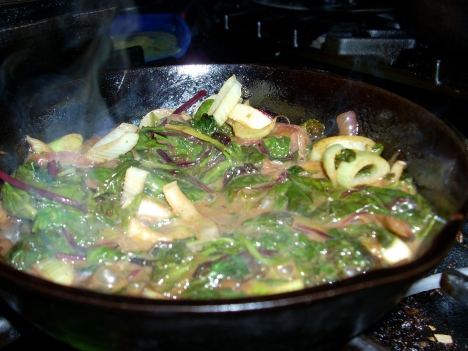One couldn’t ask for anything more to bless their gardens and farms with than butterflies and bees! I’m not sure why I named my business that, Butterflies & Bumble Bees…..I think I was thinking of things that described nature that abounded with beauty and grace and hopefully my business would do the same providing for the poor in India.
(As a side note: Butterflies & Bumble Bees is moving to a new home. It is only temporarily closed, but will reopen soon with a new face! Along side my shop will be a new home for my blog and all will be found at Butterflies & Bumble Bees dot org….If you love Peaceful Acres….as I do….you can still find it right here, but I’ll be posting on my new blog….when?…..I don’t know for sure, but it will be soon….but don’t fret, I’ll make sure you can find me where ever I go and I haven’t left yet….there are stories and tales to come…..like Josie coming into heat again….pics to come on Monday!!!! Hang tight, don’t go anywhere!!!)
Back to Bees……They are on my mind again. I’ve got lots of butterflies flitting and fluttering around my little farm during the summer months, it’s bees that have got my attention lately. Anytime I have honey bees stopping for a snack I am persuaded to leave alone the flowers they are feasting on. Besides cut flowers make me sneeze and wheeze! And since the honey bee population has declined we ought to think about ways that we can lure them to our gardens and farms for pollination and food. You know without them food as we know it will cease. Maybe that’s why scientist are now creating food in a petri dish. Now that sounds nourishing, kinda like eating a cardboard box.
While recovering my body from Chronic Lyme Disease and it’s many friends, I stopped all sweeteners even fruit for over a year or more. Then I allowed myself raw honey due to the fact that it doesn’t raise ones blood sugar levels. I took a friends word on that (I haven’t researched it but I have heard others refer to it that way) and I’m glad, because I do love local raw honey. It’s suggested that eating local honey will help with allergies….I haven’t noticed yet, mine are worse then ever.
I’ve lined up my local raw honey for the winter and hope that my stash lasts me. If I run out then I’ll have to try and locate some more, but for now I’ve got 20 lbs on order from the President of our local bee keepers society. He has mostly Black Locust honey and that’s good, but I like Wild Flower and various others best. I’ll store it in small jars just in case it starts to crystalize and I can warm it slightly. Or just scoop it in my tea as it is. It’s still good. I learned my lesson with a 5 gal container of honey I bought once. It did start to crystalize and it was nearly impossible warming the 5 gal container in the bathtub. If I store anything for any length of time I prefer to use glass, so I can avoid any leaching from the plastic to my food.
I’ve signed up for the Winter Bee Keepers Class. I’m really excited. I’d love to have my own hives and my own honey. Just like anything else, it takes time and a little money to get started. Nothing compared to getting the bovine girls though! So don’t be surprised if next year sometime I add honey bees to my little farm! But it might have to wait until the following year since hopefully next summer I will have a new calf and milk enough to swim in!!! All things in God’s good time. Plus if I have to wait until the following year, then I might as well wait until we retire the next and move to the mountains! We’ll see, I’ve lived my life like that for too long….tomorrow. Don’t do that. Learn to be content where you are. As I say, “Bloom where you are planted!”
In the mean time, here is a good article on the honey bee Colony Collapse Disorder. A very interesting assumption. It wouldn’t surprise me if it was High Fructose Corn Syrup poisoning the honey bees. Look what it’s done to our health.
Don’t forget I’ll give you a link that you can RSS and follow me onto greener pastures, but for the mean time, I’m right here!
Filed under: Dairy Cow, Farm Girl at Heart, Gardening, Herbwyfery, Homesteading, Lyme Disease, My Shop, Nutrition, Proverb 31 Woman, simple living | Tagged: bee hives, colony collapse disorder, honey bees, raw honey | Leave a comment »














